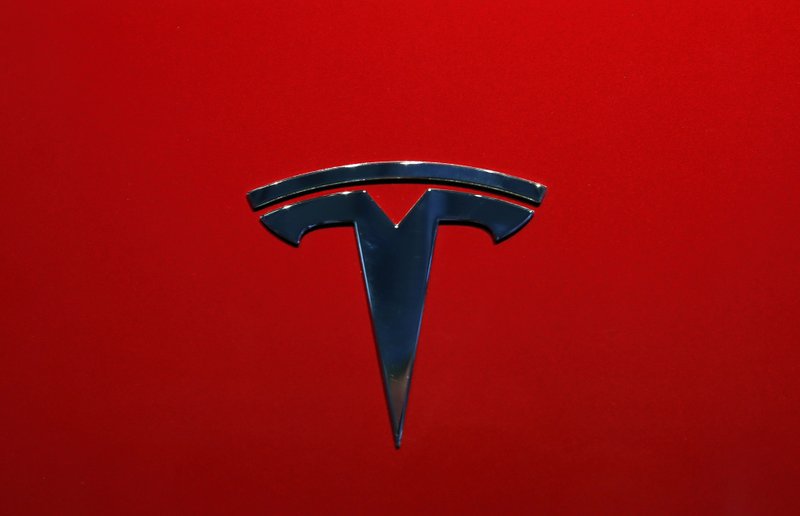
(Photo: AP)
Tesla CEO Elon Musk is more than doubling the stock he will buy in a new public offering in an apparent bid to earn investors’ confidence as he tries to turn around his struggling electric car company.
Musk raised his latest investment from $10 million to $25 million on Friday as Tesla boosted the size of a note-and-stock offering to raise much needed capital to keep the company going.
On Thursday, when Tesla first disclosed the offering, it was valued at up to $2.3 billion. But due to a positive response, the company on Friday raised the offer to as high as $2.7 billion.
Musk likely raised his own stake to show shareholders that he’s taking the same risk that he’s asking investors to, said Gartner analyst Michael Ramsey.
“He’s put his own skin in the game,” Ramsey said.
But Musk also is guarding against dilution of his ownership stake, he added. Musk is by far the company’s largest shareholder, holding about 20 percent of the company’s outstanding shares.
The offer, detailed in a filing Friday with the U.S. Securities and Exchange Commission, includes up to $1.84 billion in notes that pay 2% annual interest and convert to Tesla common stock in 2024. Also included are more than 3.5 million new shares worth as much as $866 million. The new numbers include underwriting brokers exercising their full options to buy additional notes and shares.
Last week, Tesla reported its cash balance at the end of the first quarter shrunk by $1.5 billion since December, to $2.2 billion. Musk said during a conference call that Tesla might need to raise capital again.
The company will use the proceeds to “further strengthen our balance sheet, as well as for general corporate purposes,” the filing says.
But the offerings would raise the company’s debt from $9.79 billion to as high as $11.63 billion, with the company admitting in its filing that it may not be able to generate enough cash to make all of the payments.
“If we are unable to generate such cash flow, we may be required to adopt one or more alternatives, such as reducing or delaying investments or capital expenditures, selling assets, refinancing or obtaining additional equity capital on terms that may be onerous or highly dilutive,” the company wrote in the part of the filing that discusses risk factors.
Tesla’s shares would have to reach $309.83 by May 15, 2024 for the notes to be converted to stock. That’s a 21% increase over the current price. If they don’t hit that price, Tesla is on the hook to repay the notes largely in cash, according to the filings.
In a statement on the offering Thursday, Moody’s Senior Vice President Bruce Clark wrote that the offering will give Tesla enough liquidity to pay $566 million in notes that mature in November, plus provide cash to expand distribution of Tesla’s Model 3 in Europe and cover spending needed from softening demand for all three of Tesla’s models in the U.S.
Moody’s kept a negative outlook and B3 rating on Tesla debt. That is six notches below investment grade.
In a March 30 note, the ratings agency wrote that the Model 3, Tesla’s lowest-price model, currently sells for an average of $55,000. To increase sales, the price has to drop toward $42,000, and to make enough money to pay the bills, Tesla has targeted a 25% gross profit margin on the Model 3, Moody’s said. Currently gross profits on a $42,000 Model 3 are “materially” below 25%, according to Moody’s.
“In order to achieve this margin target the company will have to undertake significant reductions in fixed and variable costs associated with the vehicle,” Moody’s wrote. “We expect that it will be a major challenge for Tesla to aggressively increase production/deliveries, shift the product mix toward the $42,000 price level, and simultaneously lower costs enough to achieve the 25% gross margin target.”
Tesla, Moody’s wrote, has no sustainable technical advantage over competitors. “Essentially all of the technologies incorporated in Tesla vehicles (or some similarly effective alternative technologies) will largely be available to competitors,” according to Moody’s.
The Palo Alto, California-based Tesla lost $702.1 million in the first quarter, among its worst quarters in two years. Sales tumbled 31% in the period. Musk predicted another loss in the second quarter but said Tesla would be profitable again by the third quarter.
The surprisingly large loss followed the company’s first back to back quarters of profitability.
Tesla has lost more than $6 billion since setting out to revolutionize the auto industry. Musk expects that future profits will be driven by rising sales and the arrival of autonomous vehicles dedicated to a new ride-hailing service.
Shares of Tesla Inc. rose 4.3 percent to $254.58 in Friday afternoon trading. They are down over 23% so far this year.


